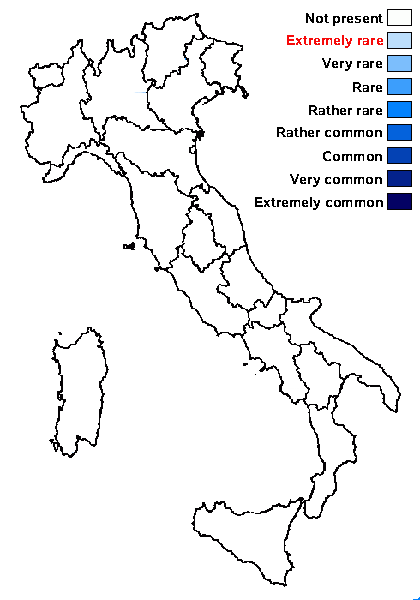Lecanora chloroleprosa (Vain.) H. Magn.
Ark. Bot., Ser. 2, 2: 201, 1952. Basionym: Lecanora chlorophaeodes subsp. chloroleprosa Vain. - Meddel. Soc. Fauna Flora Fenn., 3: 105, 1878.
Synonyms:
Distribution:
Description: Thallus crustose, episubstratic, yellowish-green with a bluish hue composed of granules and strongly convex, subglobose. 0.3-0.5 mm wide areoles partly transforming into yellowish, yellowish green to yellowish grey, discrete, circular to confluent laminal soralia, the soredia 20-30 µm thick. Photobiont chlorococcoid. Spot tests: thallus K-, C-, KC+ yellow, P-, UV+ dull orange. Chemistry: usnic acid, zeorin.Note: a species described from Northern Karelia, found on siliceous rocks in windy situations; very rare in the Alps (outside the Italian territory), apparently more common in Scandinavia. To be looked for in the Italian Alps.
Growth form: Crustose
Substrata: rocks
Photobiont: green algae other than Trentepohlia
Reproductive strategy: mainly asexual, by soredia, or soredia-like structures (e.g. blastidia)

Predictive model
Herbarium samples
Growth form: Crustose
Substrata: rocks
Photobiont: green algae other than Trentepohlia
Reproductive strategy: mainly asexual, by soredia, or soredia-like structures (e.g. blastidia)

Predictive model
| Herbarium samples |
 Index Fungorum
Index Fungorum
 GBIF
GBIF


